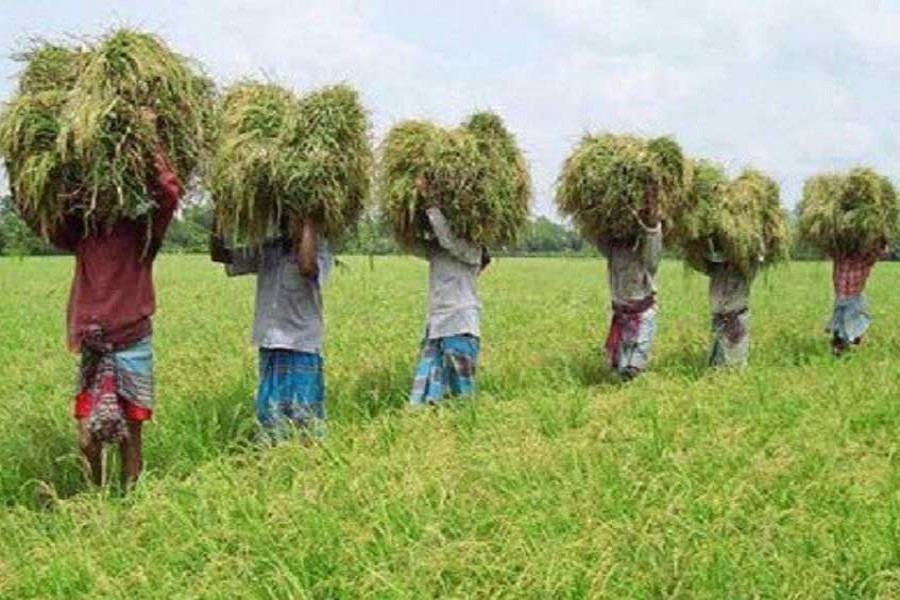As an economy, Bangladesh has performed remarkably well in recent years regardless of socio-political obstacles. It has maintained an average economic growth of 6.0 per cent per annum. Also, it performed well in reducing poverty rate to 24.3 per cent and extreme poverty rate to 12.9 per cent. The country aspires to reach upper middle-income status and eliminate extreme poverty by the fiscal year 2031. Although the stable growth rate and positive future outlook make people optimistic about the targets Bangladesh is aiming at, climate change challenges may impede such growth aspiration.
The major part of Bangladesh lies in the Ganges-Brahmaputra-Meghna Delta (also known as GBM Delta), which is Asia's largest and the world's most populated. The delta is highly vulnerable to natural disasters because of its geographical position, population density, illiteracy among them and lack of institutional setup. Evidence suggests that the regular occurrence of natural disasters like flood, cyclone, salinity intrusion, rise in sea level, river bank erosion, rising temperature, increased humidity etc. has been real threats to the overall economic development scenario in Bangladesh.
Due to the deltaic formation, natural disasters and climate change, Bangladesh has been ranked as the sixth most suffered country from extreme weather events during 1997-2016 period when it lost 0.68 per cent of gross domestic product (GDP) annually and experienced an average 0.44 deaths per 100,000 inhabitants each year (Global Climate Risk Index, 2018). NASA's climate change and global warming data show that the sea level rises by 3.4 millimetres per year with the increasing global temperature of 1.7°F each year. Such climatic changes will make it further difficult for Bangladesh by damaging food security, hurting economy's growth and harming poverty reduction efforts unless those are managed comprehensively.
The climate factors affect several sectors and lead to the economy's substantial losses. Agriculture is the most vulnerable sector. In future, climate change -- especially high temperature, humidity and radiation -- could reduce yields of high-yielding varieties of rice significantly. The increase in soil salinity will also contribute to the contraction of agricultural production. Agriculture will also suffer because of the frequent flooding caused by climate change. The forestry and ecosystems of the country will also be affected. The sea level rise (SLR), higher temperatures, an increase in cyclone intensity will damage the forest resources and the diverse ecosystem.
Additionally, the SLR will result in permanent inundation of a significant part of dry land. The land quantity shock will lead to fall in production in all sectors and ultimately, would lead to a fall in real GDP. The climate change could affect the economy of Bangladesh adversely by incurring an average loss of 2.0 per cent of GDP per annum by 2050 and it may increase to 9.4 per cent by 2100 (Asian Development Bank, 2014).
The majority of the working age population from the south-west region of Bangladesh earns their livelihood by working in agriculture, forestry and fishing sectors. Therefore, the overall unemployment rate may increase due to reduction in agricultural production. There is a positive correlation between the intensity of natural disasters and poverty rate. Hence, climate change will play a role in deteriorating the poverty status -- especially of the disaster-prone areas since majority of the coastal districts that are most exposed to natural disasters show poverty rates higher than the national average.
Adapting climate actions such as developing resilience capacity of communities, building emergency cyclone shelters, enhancing capacity of the government agencies to respond to emergencies, intensifying river embankments and coastal polders, reducing saline water intrusion in agriculture-dependent areas, executing early warning and emergency management systems etc. could be among the possible ways to avoid the worst impacts of climate change on the macroeconomic indicators. The diversity and universality of the problem will make the task trickier in future.
The successful implementation of well-coordinated long-term adaptation and mitigation policy measures will be key in the way of ensuring sustainability for agriculture, food security and livelihoods. Moreover, the amount of financial and technical support received by Bangladesh will determine how well the country deals with climate impacts and their subsequent effects. Therefore, the incremental financial support from private sector and innovative alternatives (i.e. carbon tax) for climate financing will be crucial to accommodate the total demand of financing climate projects.
Zubayer Hossen is Senior Research Associate at South Asian Network on Economic Modeling (SANEM).


